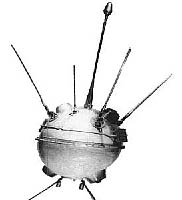The Russian Luna II


|
This is one of my favorite Russian stories, and deals with Soviet engineering at its finest. You have probably already heard the story of the Space Pen: During the Space Race, the US needed a pen that astronauts could use to write in zero gravity. Approximately $1 million was spent developing a pen with a pressurized ink cartridge that could write upside down, sideways, even underwater. It also had some moderate success as a commercial novelty. The Russians, when faced with the same problem, used a pencil. This story of the Luna II is similar. It shows that the best solution to a problem is often the simplest. The Luna II was one of the first Russian probes to be sent to the moon. Its mission was to land on the surface, take images, and relay them back to Earth. On the outside of the probe was a camera and a powerful light bulb, needed to illuminate the picture. When the craft was being tested, it was subjected to intense vibrations, similar to those that would be encountered on the long journey through space. During this test, the glass bulb cracked away from its metal base, causing the light to fail. They tried again, with the same results So they went back to the drawing board and used thicker, stronger glass for the bulb. Still, it broke during testing. They tried to shock mount the entire assembly to reduce vibrations, but to no avail. The glass light bulb broke every time. Mikhail describes this as a "typical engineering contradiction": If the bulb were made entirely of glass, it wouldn't break because it was one solid piece, with no fragile joints. However, there would be no place to connect the power. If the bulb were made entirely of metal, it would be extremely strong, but but wouldn't let light through. After much research and thought, they decided to develop a semi-translucent metal. The light wouldn't be as bright as a clear glass one, but it could certainly withstand the intense vibrations. They gave the task of designing this new material to a brilliant engineering firm, noted for solving difficult problems. The chief scientist at the firm (a close friend of Mikhail's) agreed that such a material could be developed, though it would certainly require a major effort. He thought carefully about the problem for a few minutes, and began to ask questions:
"What is the original problem?" he asked. And so the probe was built, without any glass at all around the light bulb. |